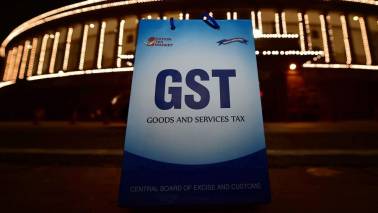RBI's Financial Stability Report projects current account deficit of 2.1% of GDP in the second half of FY19 and 3.4% of GDP in the first half of FY20
Manas Chakravarty
The Reserve Bank of India’s Financial Stability Report (FSR) provides some clues about the central bank’s thinking on the direction of interest rates.
A chart in the report, of which the baseline scenario is reproduced here, gives the central bank’s macroeconomic assumptions. In line with the projections in the RBI monetary policy statement, it takes GDP growth at 7.2 percent in the second half of 2018-19 and retail inflation at 3 percent for its baseline scenario. For the first half of 2019-20, GDP growth is forecast at 7.5 percent, with inflation at 4 percent.

Consistent with the low inflation, the report keeps the weighted average bank lending rate unchanged at 10.4 percent till the first half of 2019-20. That’s a clear message that there is unlikely to be any change in the RBI’s policy rate till at least the first half of 2019-20. But it also suggests there is unlikely to be a rate cut.
The report, however, has as its baseline a current account deficit of 2.1 percent of GDP in the second half of FY19, but that deficit increases to 3.4 percent of GDP in the first half of FY20, in the baseline scenario. What’s more, this is expected to happen despite a projected improvement in the merchandise exports to GDP ratio from 12.5 percent in the second half of FY19 to 12.7 percent in the first half of FY20. The report doesn’t say why the RBI foresees such a sharp rise in the current account deficit. Perhaps they fear a rise in crude oil prices or more imports as economic growth improves and investment demand rises.
Needless to add, the forecasts for the medium stress and severe stress scenarios are much worse.














